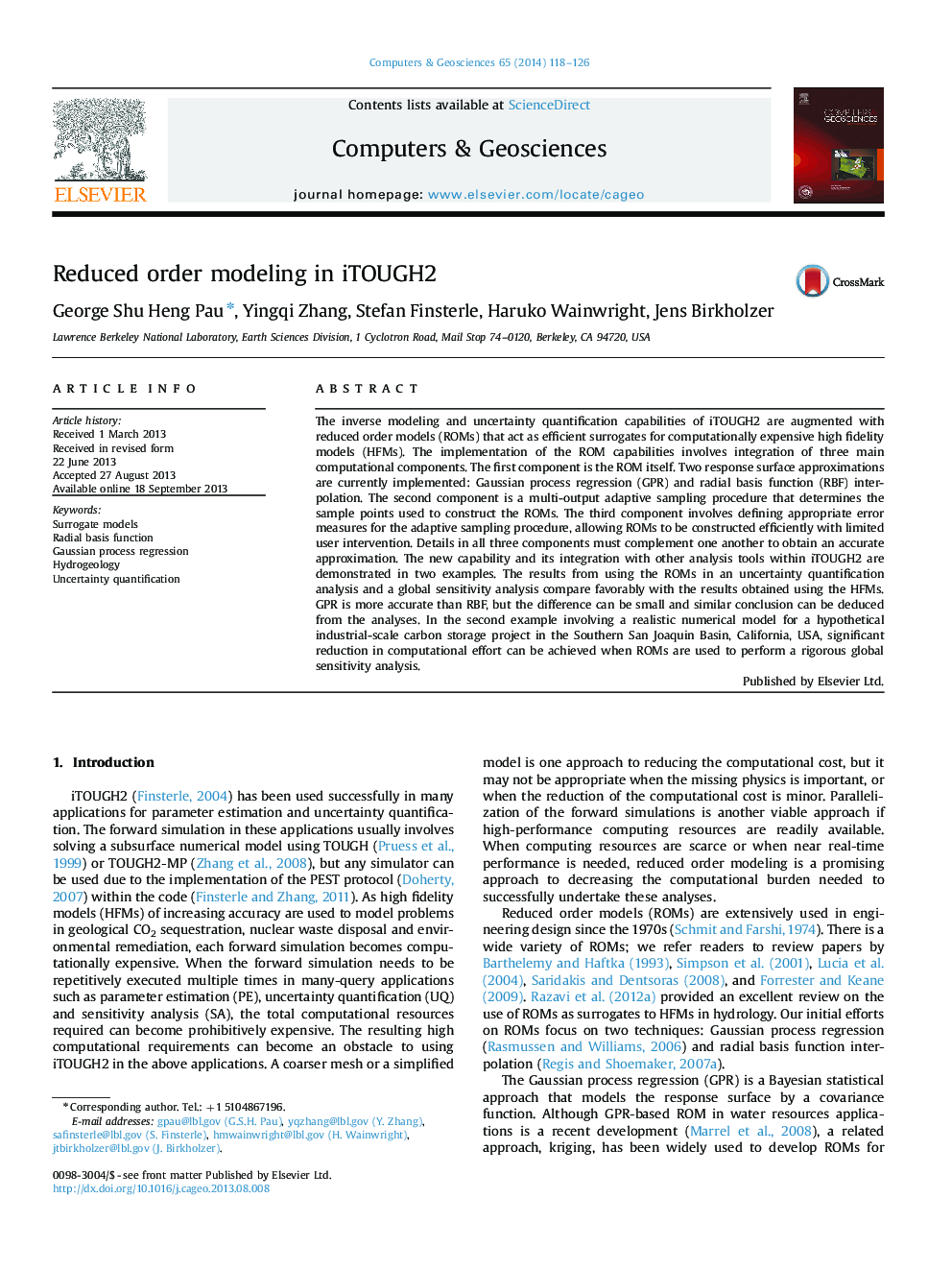| Article ID | Journal | Published Year | Pages | File Type |
|---|---|---|---|---|
| 507372 | Computers & Geosciences | 2014 | 9 Pages |
The inverse modeling and uncertainty quantification capabilities of iTOUGH2 are augmented with reduced order models (ROMs) that act as efficient surrogates for computationally expensive high fidelity models (HFMs). The implementation of the ROM capabilities involves integration of three main computational components. The first component is the ROM itself. Two response surface approximations are currently implemented: Gaussian process regression (GPR) and radial basis function (RBF) interpolation. The second component is a multi-output adaptive sampling procedure that determines the sample points used to construct the ROMs. The third component involves defining appropriate error measures for the adaptive sampling procedure, allowing ROMs to be constructed efficiently with limited user intervention. Details in all three components must complement one another to obtain an accurate approximation. The new capability and its integration with other analysis tools within iTOUGH2 are demonstrated in two examples. The results from using the ROMs in an uncertainty quantification analysis and a global sensitivity analysis compare favorably with the results obtained using the HFMs. GPR is more accurate than RBF, but the difference can be small and similar conclusion can be deduced from the analyses. In the second example involving a realistic numerical model for a hypothetical industrial-scale carbon storage project in the Southern San Joaquin Basin, California, USA, significant reduction in computational effort can be achieved when ROMs are used to perform a rigorous global sensitivity analysis.
